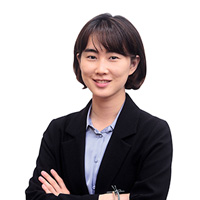Exhibition shares 10 years of research on Joseon state rituals
By Kim Hae-yeonPublished : Oct. 31, 2022 - 14:54

A special exhibition at the National Museum of Korea will shed light on Oegyujanggak Uigwe, the records of state rituals at the royal depository annex, which were returned to South Korea from the National Library of France in 2011.
Starting Tuesday, the exhibition “Pinnacle of Propriety: The Uigwe, Records of the State Rites of the Joseon Dynasty” will demonstrate the results of the past 10 years of research on Uigwe, which was inscribed into UNESCO's Memory of the World Register in 2007.
The Uigwe is a collection of records that document the procedures of important state rituals after their completion.
A total of 460 pieces will be on display, including 297 books of Uigwe and royal attire and items of the royal court banquet.
The volumes stored at the Oegyujanggak Uigwe were created exclusively for the king's review. Therefore, only a single copy of each Uigwe was made, using the finest materials and bound with great care by painters and artisans of Joseon.
A large bookshelf displaying the entire volumes of the Oegyujanggak Uigwe is presented at the NMK.
The kings of the Joseon era (1392-1910) put a high value on propriety in their rituals. The Uigwe included detailed procedures of the rites in order to convey the meaning of the rituals for the benefit of future generations.

The Oegyujanggak Uigwe illustrates in exquisite detail from figures of professionals who assisted in the proceedings of rituals to flower arrangements used to decorate court banquets.
The illustrations of the Banchado, royal procession, and Doseol, the illustrations detailing the items used for the ceremony, all painted in natural colors, are well preserved.
The exhibition consists of three parts. The first part, “The Oegyujanggak Uigwe, Books for the King,” highlights the essence of Joseon era's archival culture, captured from the detailed records and vivid illustrations in the Uigwe.
The second, “Rule of Propriety,” features specific content of the Uigwe, exploring Joseon’s ruling philosophy of dignity contained in the rule of propriety embodied through rituals.
The third, “Harmony within Order,” introduces the ideal society that Joseon aimed for: the society in which every member acted with appropriate propriety and harmony with others.
In the last section, a replica version of the Oegyujanggak Uigwe's chapter, "Court Banquet and the Offering of Garments Ceremony Held in Honor of Lady Hyegyeong," is on display, of which visitors can actually flip through the pages.
A 3D animation of the Joseon court banquet is being showcased on a 10-meter-wide screen for visitors to picture the scene as royal guests.
The exhibition runs through March 19. The museum offers free admission from Nov. 21 to Nov. 27, to commemorate the 11th anniversary of the late Park Byeong-seon.
Park was a Korean-French bibliographer at the National Library of France, who first verified the location of the Uigwe in 1975. Starting in 1991, the Korean government and scholastic community, along with Park, worked for their return, achieving their aim after 20 years of effort.
Tickets cost 5,000 won for those aged 25 to 64, and 3,000 won for ages 7 to 24.


















